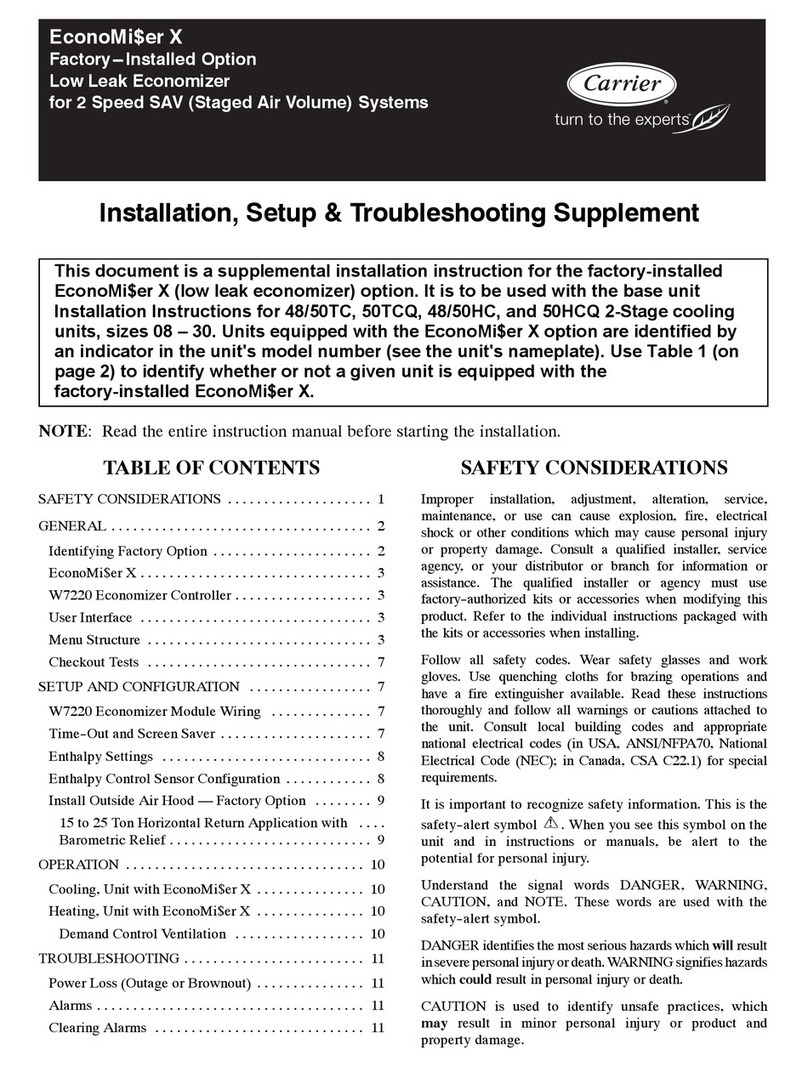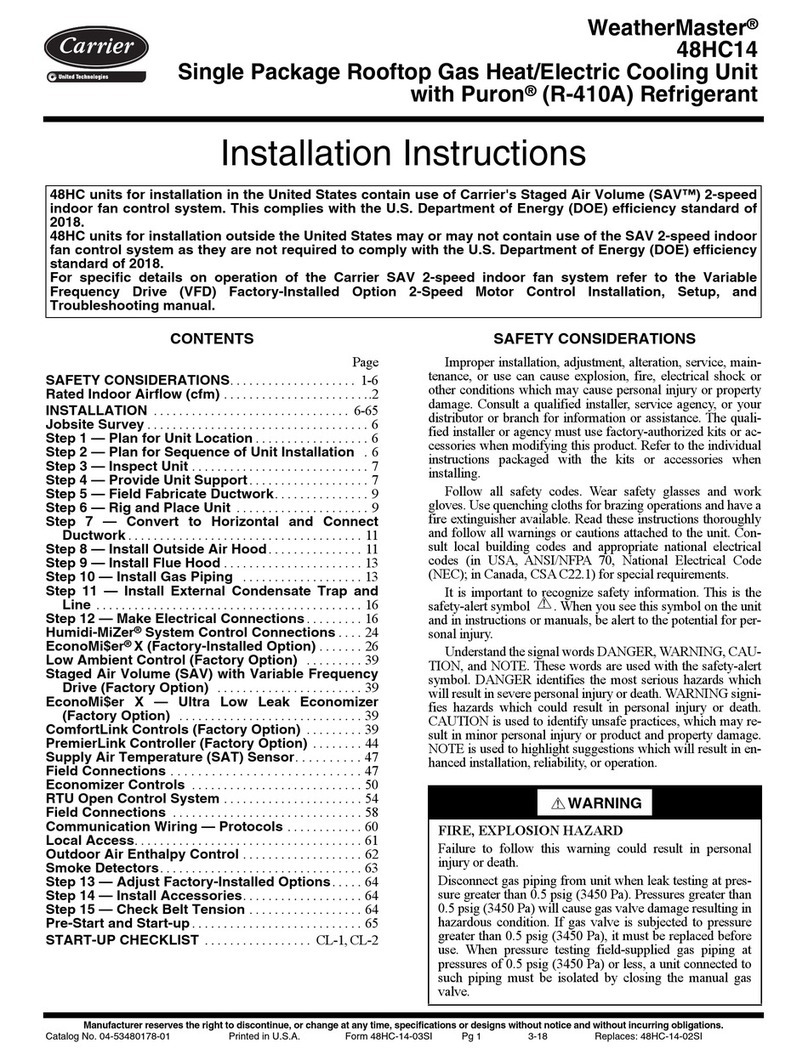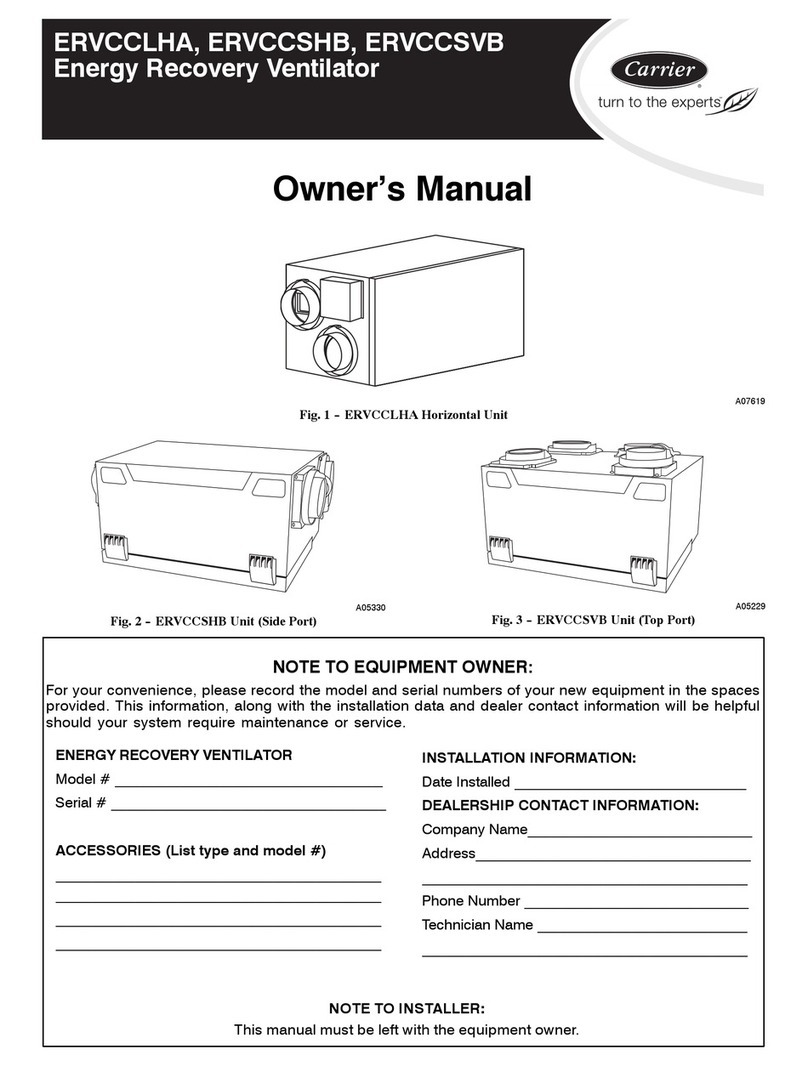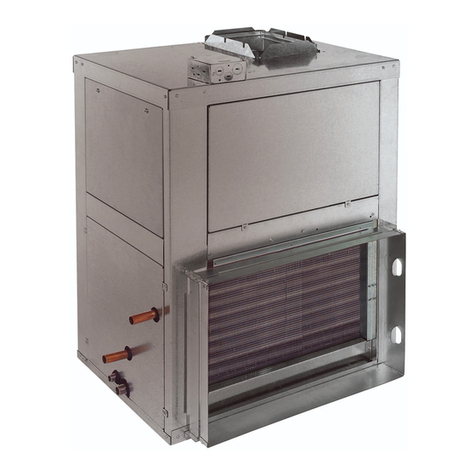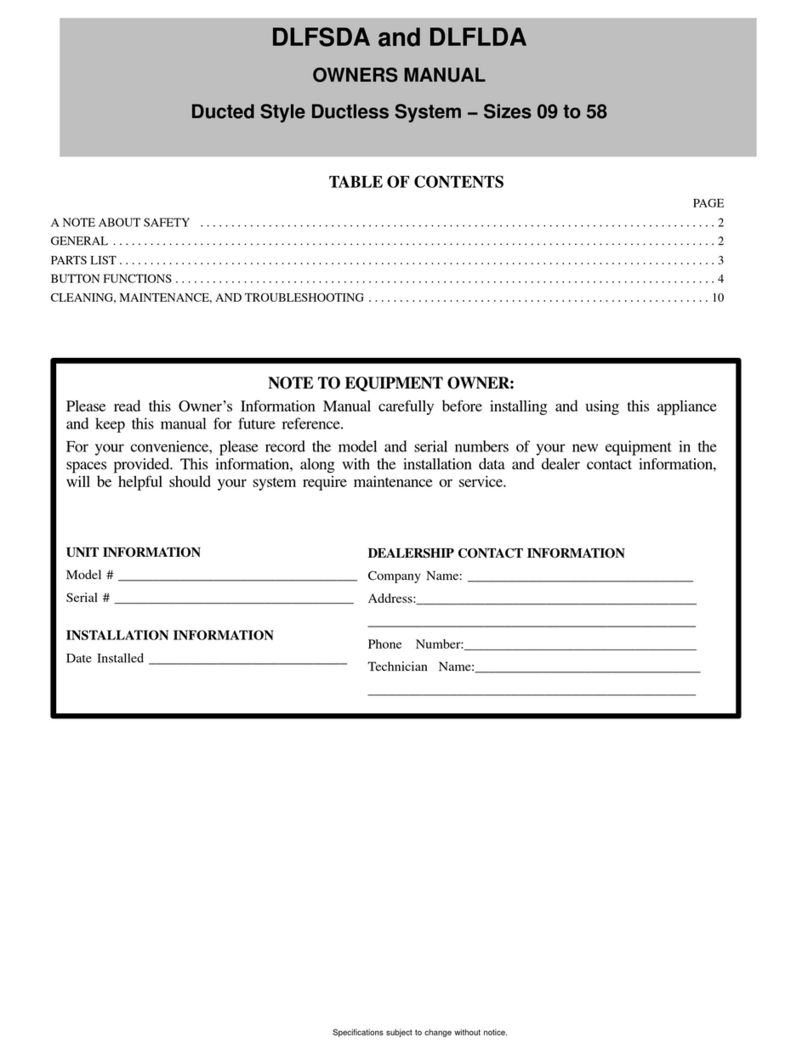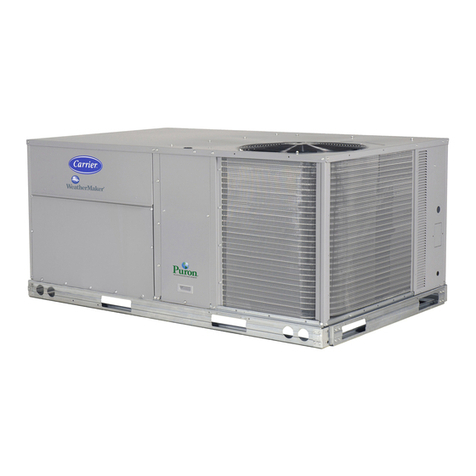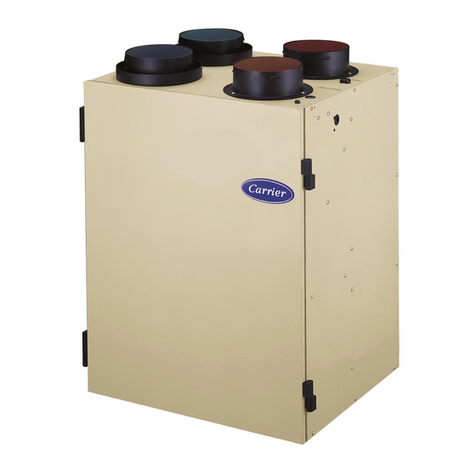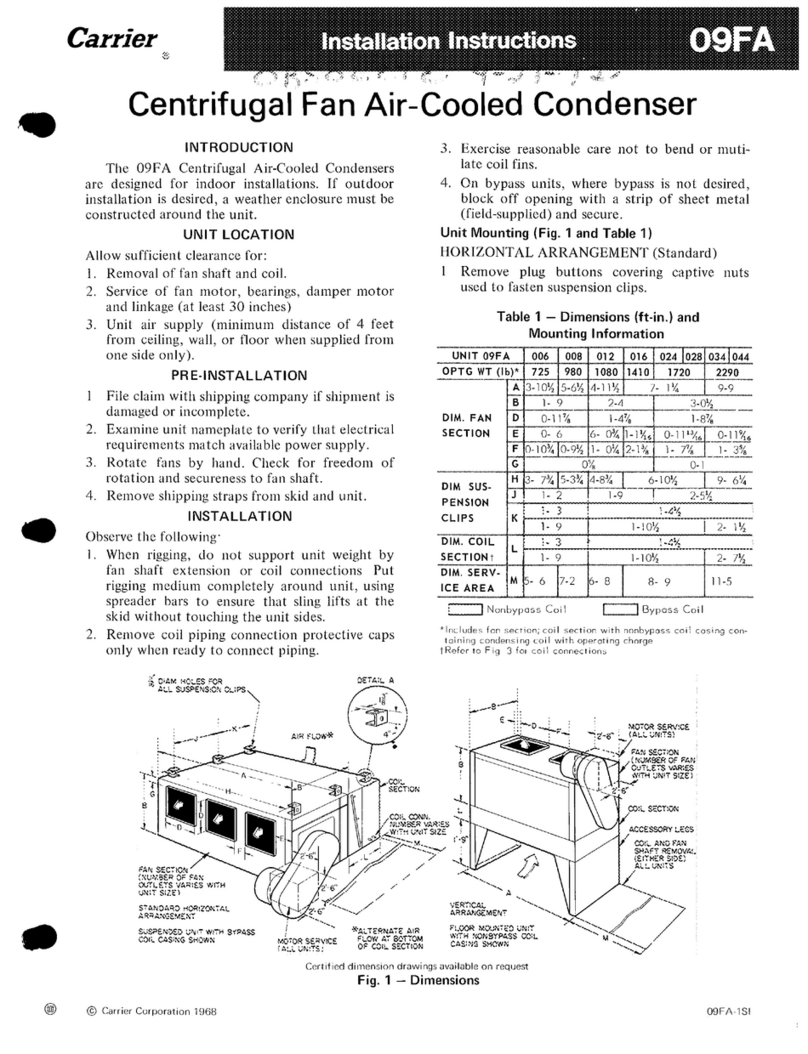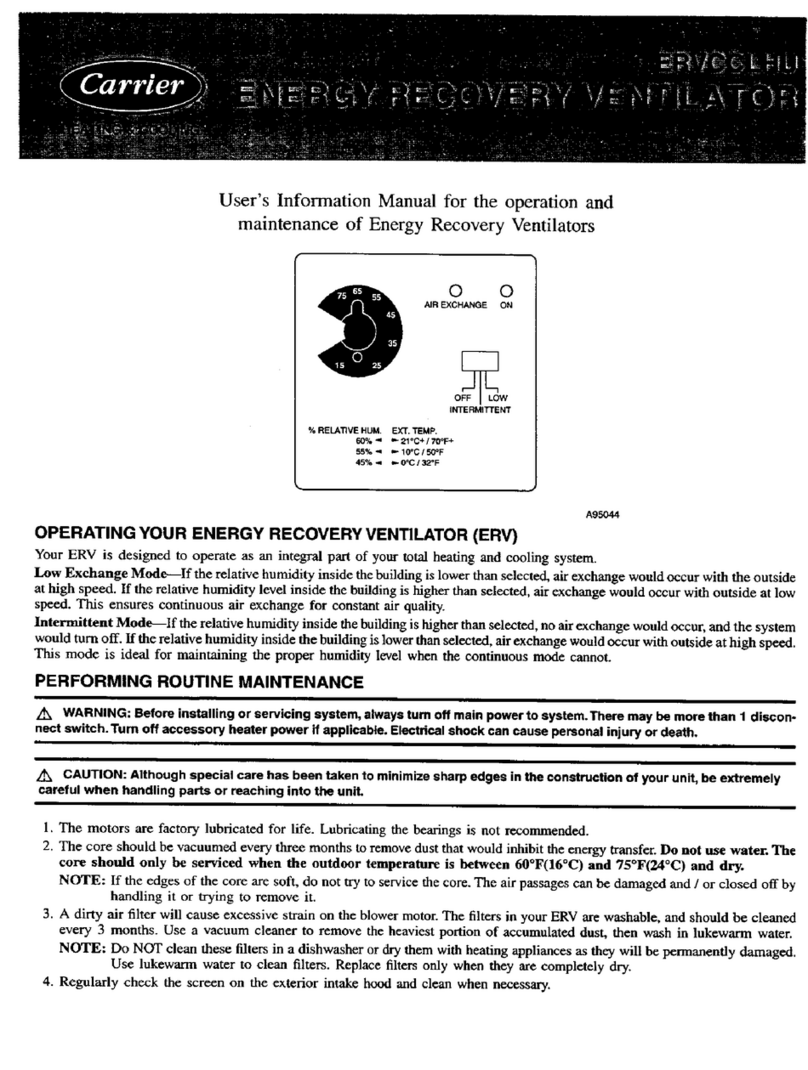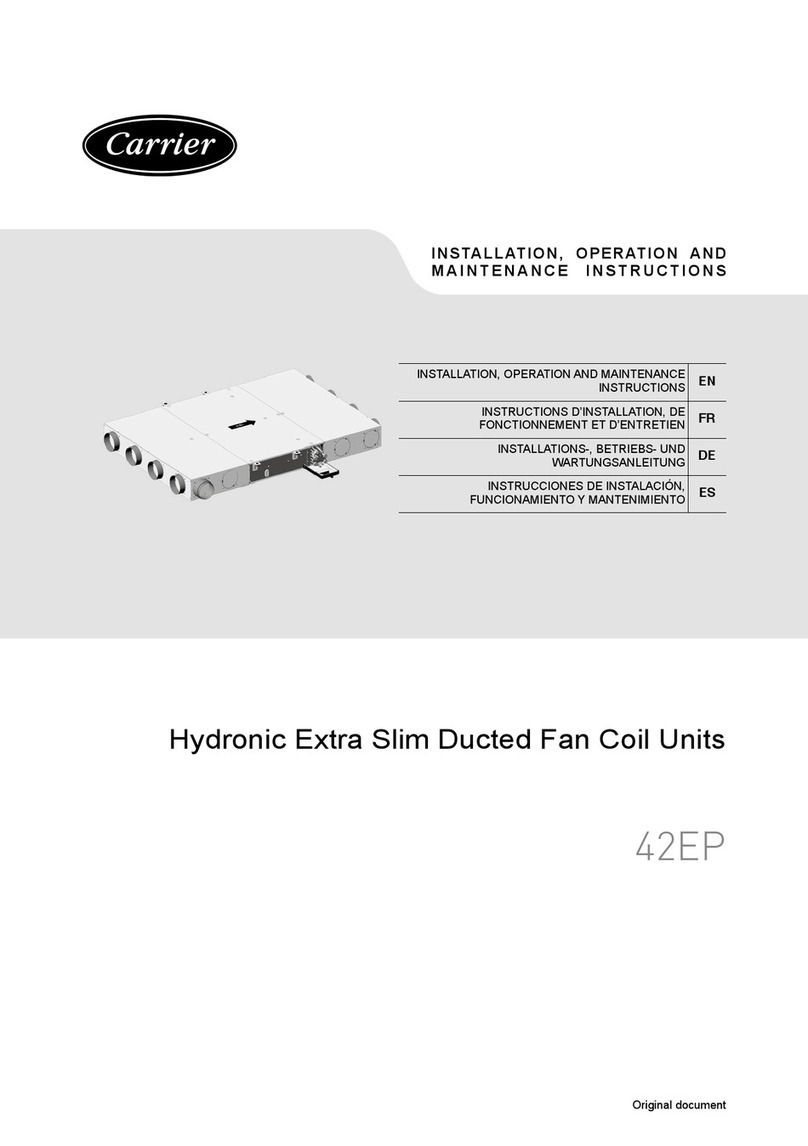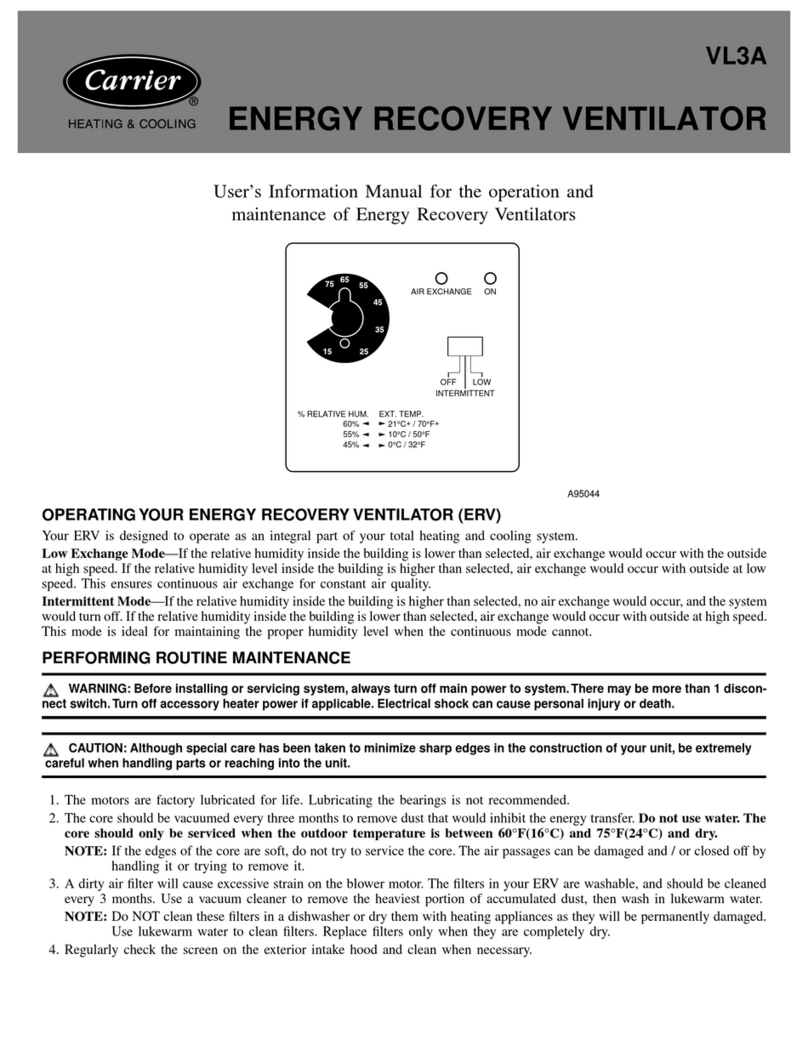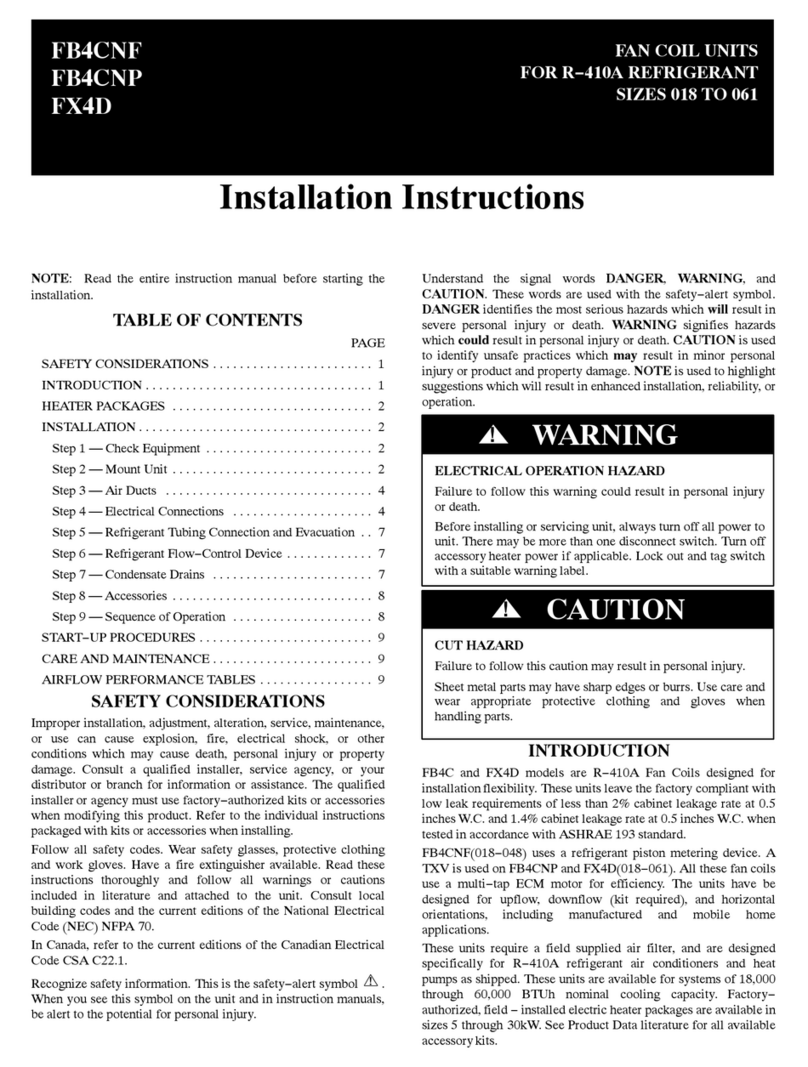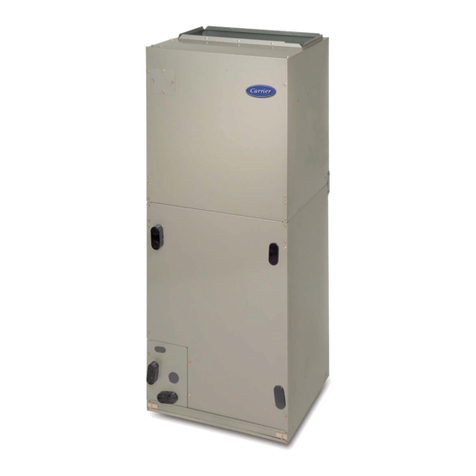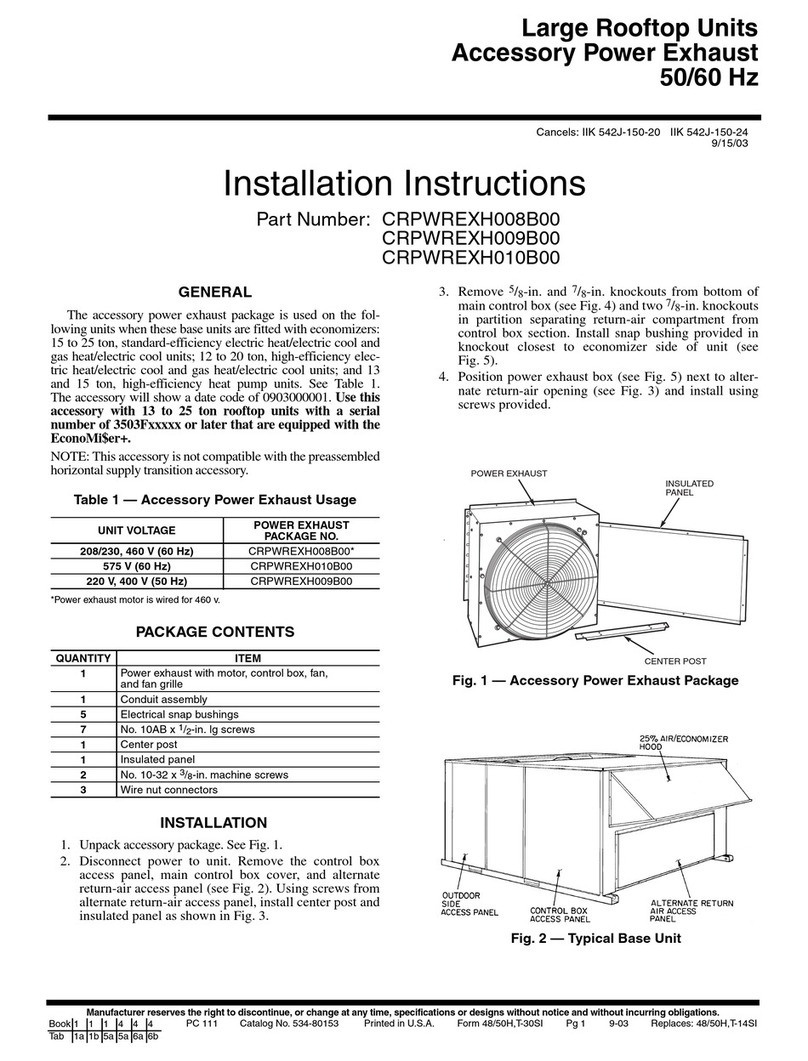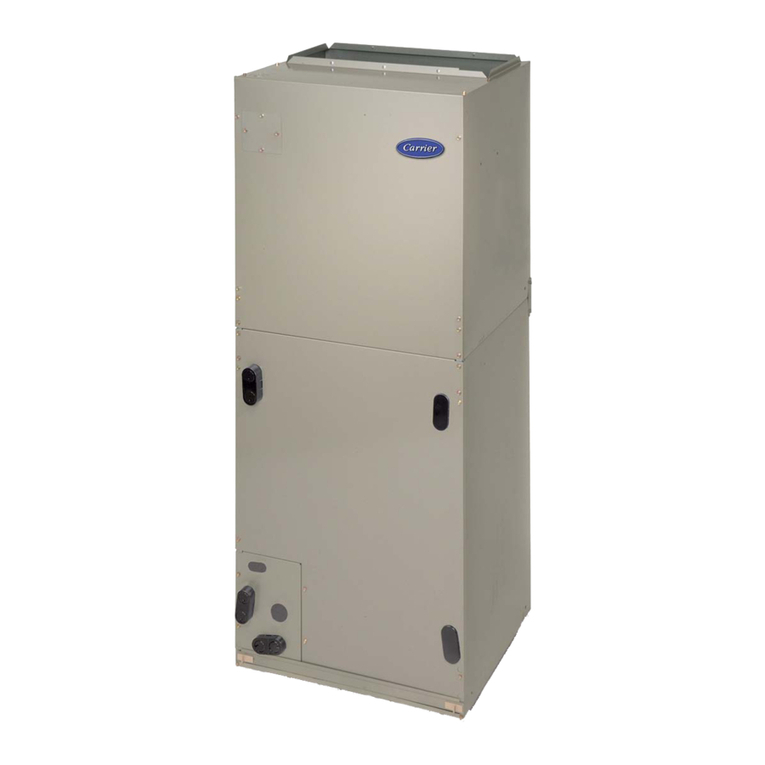
PF4MNA: Installation Instructions
Manufacturer reserves the right to change, at any time, specifications and designs without notice and without obligations.
5
a. If fan coil is away from wall, attach pipe strap to top of fan coil
using no. 10 self-tapping screws. Angle strap down and away
from back of fan coil, remove all slack, and fasten to wall stud of
structure using 5/16-in. lag screws. Typical both sides of fan coil.
b. If fan coil is against wall, secure fan coil to wall stud using 1/8-in
(3 mm) thick right-angle brackets. Attach brackets to fan coil
using no. 10 self-tapping screws and to wall stud using 5/16-in.
lag screws. (Fig. 8)
AIR DUCTS
Connect supply-air duct over the outside of 3/4-in (19 mm) flanges
provided on supply-air opening. Secure duct to flange, using proper
fasteners for type of duct used, and seal duct-to-unit joint. If return-air
flanges are required, install factory-authorized accessory kit.
Use flexible connectors between ductwork and unit to prevent
transmission of vibration. When electric heater is installed, use
heat-resistant material for flexible connector between ductwork and unit
at discharge connection. Ductwork passing through unconditioned space
must be insulated and covered with vapor barrier.
Units equipped with 20-30kW electric heaters require a 1-in (25 mm)
clearance to combustible materials for the first 36-in (914 mm) of supply
duct.
DUCT WORK ACOUSTICAL TREATMENT
Metal duct systems that do not have a 90 degree elbow and 10 feet of
main duct before first branch takeoff may require internal acoustical
insulation lining. As an alternative, fibrous duct work may be used if
constructed and installed in accordance with the latest edition of
SMACNA construction standard on fibrous glass ducts. Both acoustical
lining and fibrous duct work shall comply with National Fire Protection
Association as tested by UL Standard 181 for Class 1 air ducts.
ELECTRICAL CONNECTIONS
Model sizes 018, 024, 030, 036, 042, 048 and 060 from the factory
utilize a printed-circuit board (PCB) which has a low voltage circuit
protective fuse (5 amp), fan motor speed tap selection terminal (SPT),
and time delay relay (TDR) jumper. To disable the TDR feature, sever
the jumper wire JW1. (Fig. 9)
A03010
Fig. 9 – Fan Coil Printed Circuit Board for
Sizes 018, 024, 030, 036, 042, 048, 060
Model sizes 019, 025, 031, 037, 043, 049 and 061 from the factory
protect the low voltage circuit with a 5 amp automotive type fuse inline
on the wire harness. Speed selections are made at the fan motor by
selecting taps 1, 2 or 3 with the blue wire (see (MINIMUM CFM AND
MOTOR SPEED SELECTION on p7)). The motor is pre-programmed
with the time delay circuit on some of the speed taps (see section E for
clarification).
When a factory-approved accessory control package has been installed,
check all factory wiring per unit wiring diagram and inspect factory
wiring connections to be sure none were loosened in transit or
installation. If a different control package is required, see unit rating
plate.
Before proceeding with electrical connections, make certain that supply
voltage, frequency, phase, and ampacity are as specified on the unit
rating plate. See unit wiring label for proper field high- and low-voltage
wiring. Make all electrical connections in accordance with the NEC and
any local codes or ordinances that may apply. Use copper wire only.
The unit must have a separate branch electric circuit with a
field-supplied disconnect switch located within sight from, and readily
accessible from, the unit.
On units with a factory installed disconnect with pull-out removed,
service and maintenance can be safely performed on only the load side
of the control package.
LINE VOLTAGE CONNECTIONS
If unit contains an accessory electric heater, remove and discard power
plug from fan coil and connect male plug from heater to female plug
from unit wiring harness. (See Electric Heater Installation Instructions.)
For units without electric heat:
1. Connect 208/230V power leads from field disconnect to yellow and
black stripped leads.
2. Connect ground wire to unit ground lug.
NOTE: Units installed without electric heat should have a field-supplied
sheet metal block-off plate covering the heater opening. This will reduce
air leakage and formation of exterior condensation.
24V CONTROL SYSTEM
Connection To Unit
Wire low voltage in accordance with wiring label on the blower. (See
Fig. 10 through Fig. 15) Use no. 18 AWG color-coded, insulated (35°C
minimum) wire to make the low-voltage connections between the
thermostat, the unit, and the outdoor equipment. If the thermostat is
located more than 100-ft (30 m) from the unit (as measured along the
low-voltage wire), use no. 16 AWG color-coded, insulated (35°C
minimum) wire. All wiring must be NEC Class 1 and must be separated
from incoming power leads.
Refer to outdoor unit wiring instructions for any additional wiring
procedure recommendations.
®
®
CPC-E
94V-0
LR40061
HSCI
5 AMP
C
T
G
R
SPT
K1
U1
R7
R9
R10
C8
C7
R2
R3
C3
R6
R11
C4
C6
C5
R8
R5
R4
Q1
C1C2
F1
JW1
R1
Z1
D2
D1
NO
NC
FAN
RELAY
C
C
WARNING
!
ELECTRICAL SHOCK OR UNIT DAMAGE HAZARD
Failure to follow this warning could result in personal injury, death,
and/or unit damage.
If a disconnect switch is to be mounted on unit, select a location where
drill and fasteners will not contact electrical or refrigeration
components.
WARNING
!
ELECTRICAL SHOCK HAZARD
Failure to follow this warning could result in personal injury or death.
Field wires on the line side of the disconnect found in the fan coil unit
remain live, even when the pull-out is removed. Service and
maintenance to incoming wiring cannot be performed until the main
disconnect switch (remote to the unit) is turned off.
